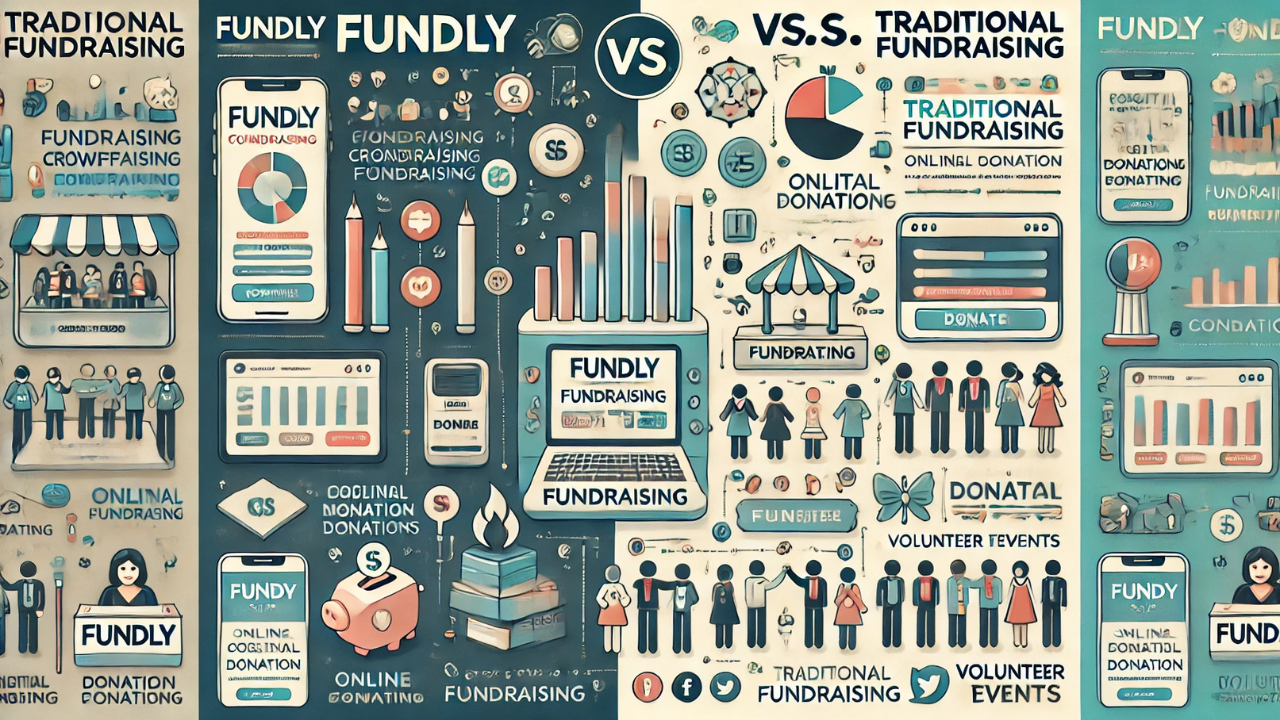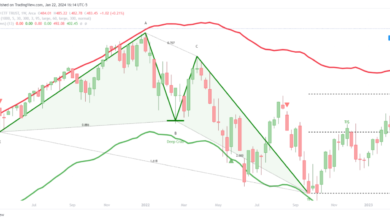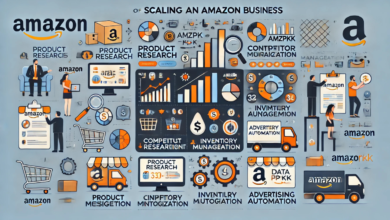In today’s digital age, fundraising has evolved significantly, with platforms like Fundly emerging as a revolutionary alternative to traditional methods. Traditional and online fundraising have merit but differ considerably in their approaches, benefits, and challenges. This article will delve deep into the comparison of Fundly, a popular online crowdfunding platform, and traditional fundraising methods, highlighting what sets Fundly apart.
What Is Fundly?
Fundly is an online platform that allows individuals, nonprofits, and organizations to launch fundraising campaigns for various causes, from medical expenses and personal needs to charitable projects and community initiatives. It provides a straightforward and user-friendly way to raise funds through a personalized campaign page, leveraging social media, email, and other online tools to reach potential donors.
Unlike traditional fundraising events or strategies that may rely on in-person interactions or physical outreach, Fundly offers a convenient and digital-first approach. This means anyone with an internet connection can launch a campaign and start fundraising from anywhere in the world.
Traditional Fundraising Methods
Traditional fundraising has existed for centuries and includes a range of approaches, such as hosting events, sending out direct mail, phone calls, or in-person appeals. Some common examples include charity galas, silent auctions, community bake sales, and door-to-door donations. These methods are typically based on personal interactions and often involve significant investments of time, resources, and effort to organize and execute.
Traditional fundraising may rely on established donor relationships and in-person efforts to gather contributions. Though these efforts can be highly effective in certain situations, they tend to have a limited geographic reach and require significant overhead costs.
Key Differences Between Fundly and Traditional Fundraising
1. Accessibility and Reach
One of the most significant advantages of Fundly over traditional fundraising is its reach and accessibility. Fundly allows anyone to create a campaign from anywhere in the world, whereas traditional fundraising events are often limited by location and may require people to be physically present. With Fundly, your campaign can be shared instantly across the globe via social media, email, and other digital platforms.
On the other hand, traditional fundraising efforts tend to rely heavily on local communities or networks. For example, a charity gala or auction may only attract people who live nearby, meaning your audience is significantly limited.
2. Cost-Effectiveness
Traditional fundraising can be expensive, with costs associated with venue rental, food, entertainment, marketing, and other logistical aspects. Fundly, by contrast, operates entirely online, drastically reducing overhead costs. There are no physical venues, transportation, or event management expenses. While Fundly does charge a fee for its platform (usually a small percentage of the funds raised), it is typically much more affordable than hosting a physical event.
3. Time and Effort
Organizing a traditional fundraiser requires a significant amount of time and effort. This includes planning, recruiting volunteers, securing a venue, marketing the event, and ensuring everything runs smoothly. For many, it can take months of preparation.
Fundly simplifies this process by allowing users to create and manage campaigns quickly and easily. You can launch a campaign in hours, with minimal setup required. Additionally, ongoing promotion of your campaign is manageable through social media, emails, and online sharing.
4. Donor Experience
Fundly offers a seamless and convenient donation process. Donors can contribute to a campaign anytime, anywhere, using various payment methods like credit cards, PayPal, and more. The platform is designed to be mobile-friendly, making it easy for donors to support your cause directly from their smartphones.
Traditional fundraising, on the other hand, often requires donors to attend events in person or write checks, which can be cumbersome. While digital donations have become more common in traditional fundraising, they still need to be more widespread and seamless on platforms like Fundly.
5. Marketing and Outreach
Marketing a traditional fundraising event often requires print materials, word-of-mouth promotion, and sometimes costly advertising. You may need to distribute flyers, place ads, and rely on volunteers to spread the word. The scope of this marketing is typically limited by the resources available and the size of the local community.
With Fundly, marketing, and outreach are built into the platform. You can share your campaign on social media, send email updates, and tap into the platform’s existing network to spread awareness. Fundly also offers tools to track your campaign’s performance and adjust your strategies accordingly, which is challenging with traditional fundraising.
6. Flexibility and Customization
Fundly provides a high degree of flexibility and customization. You can personalize your campaign page, create videos, write compelling stories, and update your donors with progress reports and thank-you notes. This level of personalization helps build a connection with your audience, making them feel more engaged and invested in your cause.
Traditional fundraising may need more customization. While events can certainly be tailored to some extent, they are often more generic, and the experience only sometimes fosters a deep personal connection with potential donors.
Benefits of Fundly
- Global Reach: Fundly campaigns can attract donors worldwide, vastly expanding your fundraising pool.
- Lower Costs: Online fundraising eliminates many costs associated with traditional events, allowing more funds to go directly to your cause.
- Convenient Giving: Donors can contribute with just a few clicks, making it easier to give at their convenience.
- Efficient Campaign Management: With Fundly’s built-in tracking and reporting tools, campaign management becomes far easier.
- Real-Time Updates: Fundly enables you to keep your supporters updated throughout the campaign, maintaining momentum and engagement.
Drawbacks of Fundly
- Online Fatigue: Some people may be hesitant to donate online due to concerns about security or digital fatigue from too many online appeals.
- Dependence on Digital Marketing: Fundly campaigns rely heavily on social media and digital marketing, which may only be as effective for some causes or demographics.
- Platform Fees: While Fundly’s fees are relatively low, they still exist and may deter some users who prefer to raise funds independently.
Conclusion: Which Is Better?
The choice between Fundly and traditional fundraising ultimately depends on the nature of the campaign and the specific needs of the fundraiser. For individuals or organizations looking for a quick, cost-effective, and far-reaching way to raise funds, Fundly offers an attractive alternative to traditional fundraising methods. Its online platform, global reach, and ease of use make it ideal for campaigns of all sizes and causes.
However, traditional fundraising still has its place, especially for established organizations with strong local support networks or for causes that benefit from in-person interaction and community events. Each approach has unique advantages; a blended strategy works best for some.
Ultimately, Fundly stands apart for its modern, flexible, and user-friendly approach, making it an increasingly popular choice for fundraisers in the digital era.
5 FAQs About Fundly vs. Traditional Fundraising
1. How much does it cost to use Fundly? Fundly charges a platform fee (usually around 4.9%) and a transaction fee (2.9% + $0.30 per donation). These fees are standard for online fundraising platforms and significantly lower than overhead costs for traditional fundraising events.
2. Can Fundly be used for any fundraising? Yes, Fundly can be used for various fundraising causes, including medical expenses, education, charity events, personal needs, community projects, and more.
3. What are the main disadvantages of traditional fundraising? Traditional fundraising can be time-consuming, expensive, and limited in reach. Physical events require significant planning resources, and the fundraising pool is often confined to local or regional supporters.
4. How does Fundly make it easy to reach potential donors? Fundly simplifies outreach through built-in tools for sharing campaigns on social media, sending email updates, and accessing a broader network of potential donors who already use the platform.
5. Is it possible to combine Fundly with traditional fundraising methods? Absolutely. Many fundraisers combine online campaigns through platforms like Fundly with conventional methods, such as hosting events or reaching out to existing supporters to maximize their fundraising potential.




